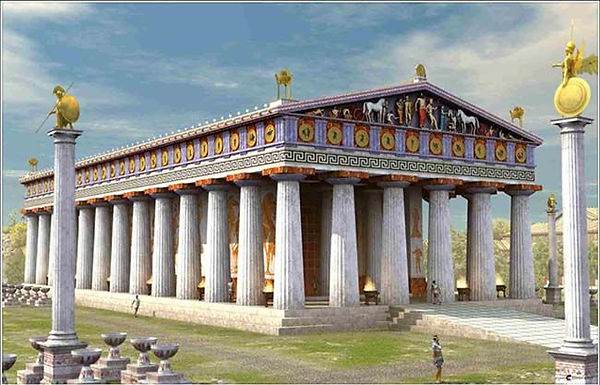ILLUSTRATION G
Greek and Roman
The Marathon Youth, 4th century BC bronze statue, Praxiteles, National Archaeological Museum, Athens.

Donatello statue:
David- famous bronze figure nude, dated 1430s or later; famous as the first unsupported standing work of bronze cast during the Renaissance, the first freestanding nude male sculpture made since antiquity. It depicts the biblical hero David with an enigmatic smile, posed with his foot on Goliath's severed head just after defeating the giant. The youth is completely naked, apart from a laurel-topped hat and boots, bearing the sword of Goliath

Greek and Roman
The Marathon Youth, 4th century BC bronze statue, Praxiteles, National Archaeological Museum, Athens.
Signorelli painting
the Damned taken to Hell and received by Demons: His work won a commission for the frescoes in the large lunettes of the walls of the chapel. Work began in 1500, completed in 1503; these frescoes are considered the most complex and impressive work by Signorelli. He and his school spent two years creating a series of frescoes concerning the Apocalypse and the Last Judgment, starting with the Preaching of the Antichrist, continuing with tumultuous episodes of the End of the World, finding a counterpart in the Resurrection of Flesh. The fourth scene is a frightening depiction of the Damned taken to Hell and received by Demons. Signorelli has gone to the extremes of his fantasy and evocative powers to portray his vision of the horrible fate, agony & despair of the damned. The naked human body is his only expressive element, showing the isolated bodies entangling each other, merging in a convoluted mass. They are overpowered by demons in near-human form, depicted in colours of every shade of decomposing flesh. Above them, a flying demon transports a woman, the Whore of the Apocalypse.

Greek and Roman
Temple of Zeus at Olympia-the temple, built in the second quarter of the fifth century BC, was the model of the fully developed classical Greek temple of the Doric order.

Michelangelo façade:
Palazzo Farnese, palace, Rome: originally designed by Antonio da Sangallo the Younger (one of Bramante's assistants in the design of St. Peter's); construction began in 1515, commissioned by Alessandro Farnese (appointed cardinal in 1493 at age 25, a prince of the Church. On his election as pope in 1534 the size of the palace was increased & he employed Michelangelo to completed the redesigned third story with its deep cornice and revised courtyard setting. These changes reflected both Alessandro's new status & the power of the Farnese family. The facade includes alternating triangular & segmental pediments that cap the windows of the piano nobile, the central rusticated portal & Michelangelo's projecting cornice which throws a deep shadow on the top of the facade. He revised the central window in 1541, adding an architrave to give a central focus to the facade, above which is the largest papal coat-of-arms with papal tiara Rome had ever seen.

